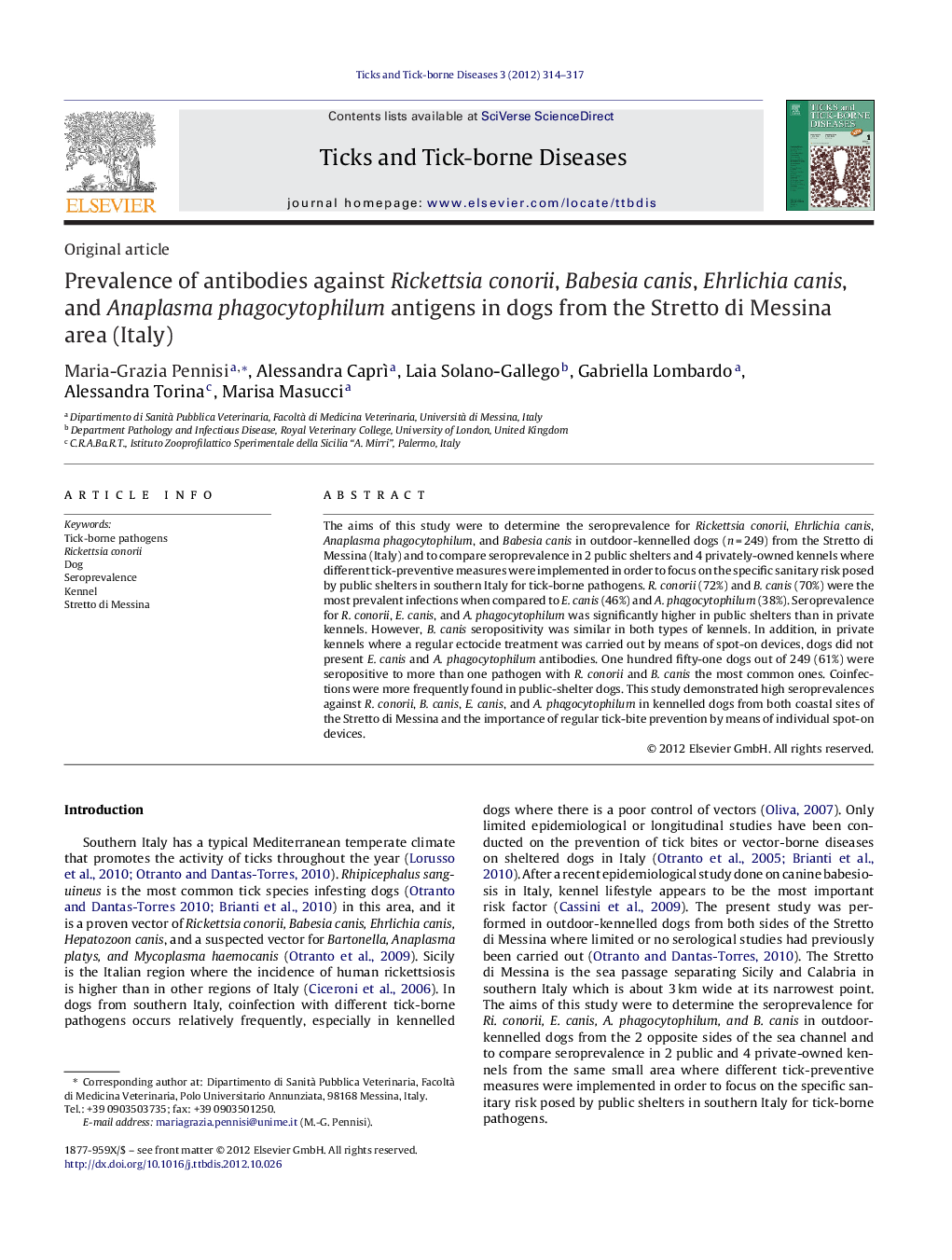| Article ID | Journal | Published Year | Pages | File Type |
|---|---|---|---|---|
| 5807351 | Ticks and Tick-borne Diseases | 2012 | 4 Pages |
Abstract
The aims of this study were to determine the seroprevalence for Rickettsia conorii, Ehrlichia canis, Anaplasma phagocytophilum, and Babesia canis in outdoor-kennelled dogs (n = 249) from the Stretto di Messina (Italy) and to compare seroprevalence in 2 public shelters and 4 privately-owned kennels where different tick-preventive measures were implemented in order to focus on the specific sanitary risk posed by public shelters in southern Italy for tick-borne pathogens. R. conorii (72%) and B. canis (70%) were the most prevalent infections when compared to E. canis (46%) and A. phagocytophilum (38%). Seroprevalence for R. conorii, E. canis, and A. phagocytophilum was significantly higher in public shelters than in private kennels. However, B. canis seropositivity was similar in both types of kennels. In addition, in private kennels where a regular ectocide treatment was carried out by means of spot-on devices, dogs did not present E. canis and A. phagocytophilum antibodies. One hundred fifty-one dogs out of 249 (61%) were seropositive to more than one pathogen with R. conorii and B. canis the most common ones. Coinfections were more frequently found in public-shelter dogs. This study demonstrated high seroprevalences against R. conorii, B. canis, E. canis, and A. phagocytophilum in kennelled dogs from both coastal sites of the Stretto di Messina and the importance of regular tick-bite prevention by means of individual spot-on devices.
Related Topics
Life Sciences
Agricultural and Biological Sciences
Animal Science and Zoology
Authors
Maria-Grazia Pennisi, Alessandra Caprì, Laia Solano-Gallego, Gabriella Lombardo, Alessandra Torina, Marisa Masucci,
